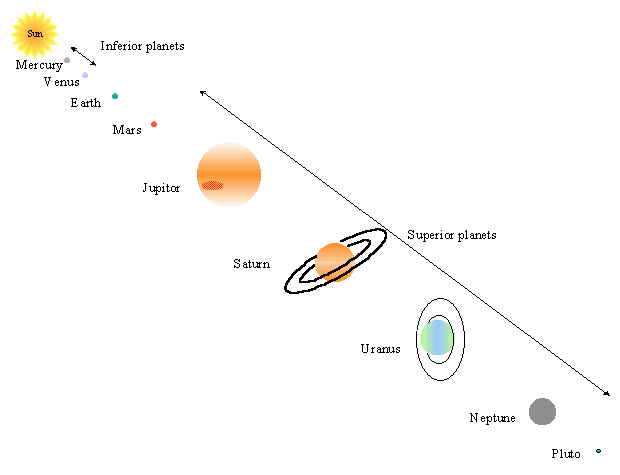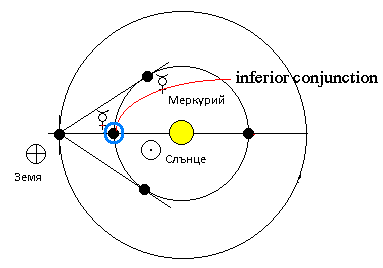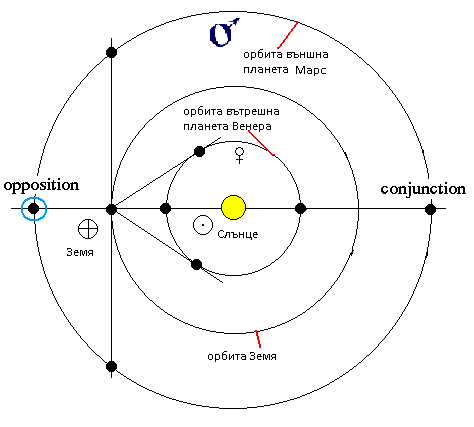I will slightly divert before I continue the topic of houses ruling. The reason is that Mercury is in the so-called retrograde motion between August 20, 2010 and September 14, 2010. Mercury, in particular, has such periods about 3 times a year - roughly every four months for about 21 days. In fact, that is the planet that enters into such motion most often.
The frequency for other planets is different. In practice, there is at least one retrograde planet for most of the year.
What is the retrograde motion as phenomenon and what is its meaning?
Each planet (except the Sun and the Moon), moving along its orbit, has periods in which its path is unusual when viewed from the earth – it turns its direction – and the planet appears to reverse. These periods are called retrograde.
Many modern astrologers (and not only) consider that the retrograde planet is somehow blocked in its expression. Since it is seen to reverse when viewed from the Earth it is too easy to fall into the trap of superficial interpretation and perceive this motion as something negative. Do not interpret the word “retrograde” as backward, degenerative, decadent, worsening, retreating. The meaning is “I reverse to go again but in another way.”
Now, I will focus on astronomical facts a little to get a clearer picture of the retrograde motion of planets. Implicitly, astronomical facts are crucial to the very interpretation from astrological point of view.
Let’s have a look at the planets arranged in a straight line - like this:

Note where the Earth is. The planets the orbits of which are between the Sun and the Earth are called inferior planets. These are Mercury and Venus. The other planets the orbits of which are behind the Earth’s orbit (Earth is between the Sun and them) are called superior planets. These are Mars, Jupiter and Saturn (plus Uranus, Neptune and Pluto). The Latin terms respectively are inferior (internal) and superior (external). All who use English can translate these words themselves. Inferior means low, lower, and superior – higher, senior, supreme. These terms have their meaning, but this is not the point now. I will only mention that there are no lower and higher planets within the meaning of the most.
Inferior planets actually do not go away from the Sun. In each horoscope you will always find Mercury and Venus or in the same sign in which the Sun is, or in any of the neighbours. In practice, there is no sextile, square, trigon or opposition aspects between the Sun and these two planets. This makes sense given how close their orbits are to the Sun. Mercury turns away from it up to 28° in the course of the zodiac, and Venus – to 47°. I will give more details on this issue in a subsequent article. Because it is something important. It makes no special meaning the aspects between the Sun and Mercury and Venus to be so limited, right?
So, let’s go get back to retrogression. It happens because of the different motion speed of the planets. Make the following analogy - if you are in a car moving with, say, 100 km/h and leave behind another car that is moving with 60 km/h it will seem that the slower car is moving backwords. This is exactly what happens in the retrograde motion of planets - from our earthly perspective. In fact, no planet moves back or turns the direction of its motion.
This lagging behind with the inferior planets - Mercury and Venus - occurs when, moving along their way, the two planets stand between the Earth and the Sun. Like this:

This position is enclosed in blue colour. It is called inferior (or inner) conjunction.
The retrograde motion of the superior planets occurs when they are in an approximate area of opposition to the Sun - in this case, the Earth stands between the planet and the Sun:

What is typical of those positions and the retrograde motion respectively from astronomical point of view:
1. The planet is closest to Earth – its other positions are always more distant.
2. Because of its proximity to Earth, the planet is at the most bright and visible for us on Earth.
3. When viewed from Earth, the planet crosses the same section of the celestial sphere more than once.
In summery, the findings of these three factors are as follows – the retrograde planet becomes powerful and strong because of its proximity to the Earth. There is something specific, something special associated with it. It is just different. It functions in a manner that is inverted and opposite to its normal behaviour. Crossing a given area more than once means that it brings us back to something, it makes us pay attention to it, note it.
I will focus specifically on Mercury later in the article as it now is its retrograde period.
Mercury is the planet responsible for communication, information, mental connections, skilful hands, detail, motion in all its forms. But what happens when Mercury takes the opposite to its normal direction? Everything up falls under some challenges and unusual external situations arise. In normal life this can be quite confusing and disturbing. When Mercury is retrograde we begin to doubt whether we speak what we must, we often change the direction of our thoughts and decisions, we can mistaken something important which will slow us down, etc. And the normal human reaction to this is to put a label – “Very bad.”
But is it really so bad? I’ve mentioned already that in fact people give these labels but actually everything is correct, according to the natural harmony and geometry.